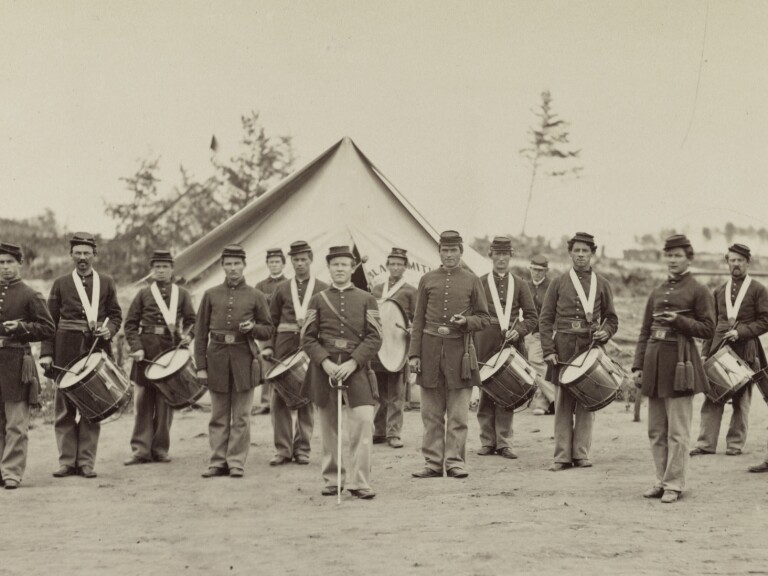
1861
Sixteen-year-old Robert Wood Johnson first developed an interest in healthcare during the American Civil War.These near-constant operations were performed by surgeons who didn’t wash their hands or clean their tools between patients. Infection was common and often fatal.
While his two older brothers fought in the Civil War, Johnson was too young to serve. So, his mother secured him an apprenticeship at her family’s pharmacy, Wood & Tittamer, in Poughkeepsie, New York.
Wood & Tittamer
This is a photo of the Wood & Tittamer pharmacy where Johnson first apprenticed. Owned by his mother’s cousin, the business was both a wholesale and retail drugstore.The American pharmacy
The pharmacy trade went beyond distributing medicine; it included mixing products and recommending treatments. Many Americans viewed their local pharmacist as a trusted advisor and a first point of contact, even before a physician.There, he learned the business of mixing medicated plasters, which launched his career in the growing industry of medical products.
Probably no other branch of the pharmaceutical art has been the occasion of so much toil, anxiety, and failure and discouragement before any measure of success was met...Expressive expletives could not be restrained.
What is a medicated plaster?
Medicated plasters were popular 19th-century products: they were adhesive patches that delivered medicine directly through the skin. Medicated plasters were used to treat a variety of ailments, including pain and inflammation.1864
Following his apprenticeship, Johnson’s first stop was New York City, where he worked as a pharmaceutical wholesaler. This photograph of Lower Manhattan in the 1860s was taken only blocks from Johnson’s office within a few years of his move to New York City.1875
Seabury & Johnson rapidly expanded, and within a few short years, had become one of the most widely recognized medicated plaster brands in the world.Explore the role of women workers

1876
Johnson was among the 10 million people who visited the 1876 Centennial Exposition in Philadelphia. He was in part drawn to the World’s Fair by its International Medical Congress, the largest gathering of doctors in American history to date.Johnson represented his company at the fair. It was there that he listened to Dr. Joseph Lister explain his radical, new procedure: antiseptic surgery.
What visitors saw
1876
Johnson represented his company at the fair. It was there that he listened to Dr. Joseph Lister explain his radical, new procedure: antiseptic surgery.
Without strict antiseptic treatment, it is impossible to freely lay open a knee-joint, with the certainty that no danger will follow.
Surgery during the Civil War

Doctor performing surgery to set a broken leg during the Civil War, 1863
©CORBIS/Corbis via Getty Images
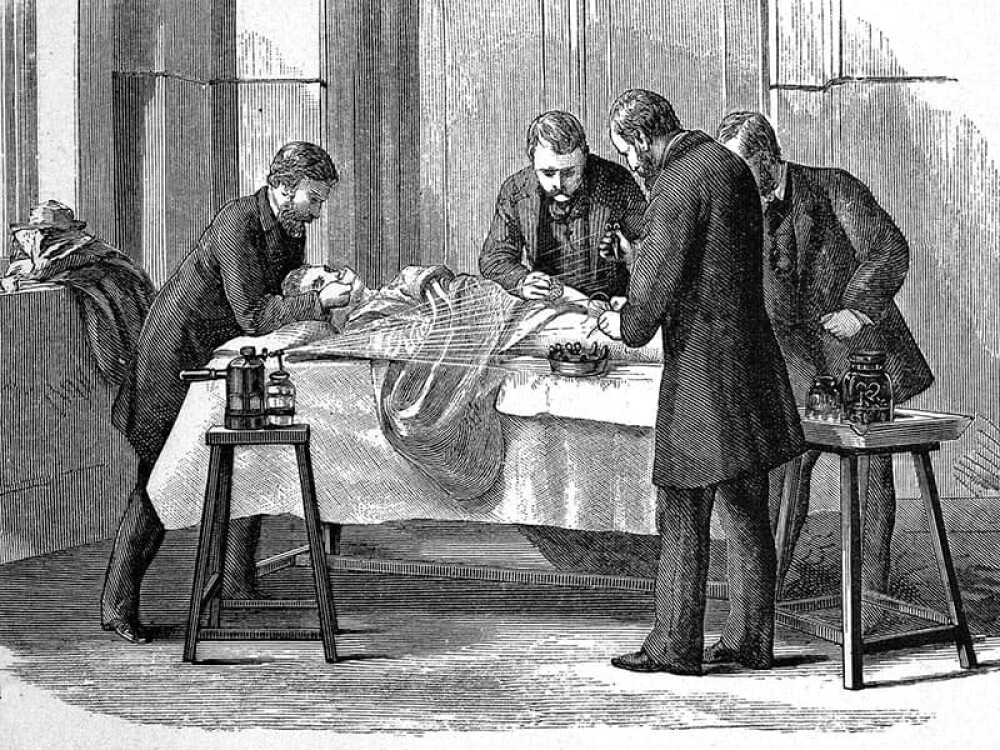
Lister promoted new surgical tools and methods, including handwashing, sterilizing instruments, and covering wounds with antiseptic-soaked dressings.
1876
While many doctors in the audience were skeptical of Lister’s surgery, Johnson was convinced that it was the future of medicine.
1886
So inspired by Lister’s antiseptic methods, Johnson parted ways with his business partner, Seabury, and started Johnson & Johnson with his two younger brothers, Edward Mead and James Wood in 1886. Their company manufactured the world’s first mass-produced, sterile surgical supplies.The three brothers formed a formidable team.



We are all fortunate, in that we are engaged in manufacturing products to be used throughout the world for the relief of pain and suffering.
1886
On a brisk January day in 1886, James found himself aboard a train passing through New Brunswick, New Jersey. He looked out his window and noticed a “for rent” sign on a nearby factory building.That building became Johnson & Johnson’s first home. It opened its doors with just 14 employees: eight women and six men. Today, the company’s world headquarters remains in New Brunswick.
A look inside early factories

Johnson & Johnson Archives
Women employees at Johnson & Johnson, 1890s

Johnson & Johnson early shipping department employees
Johnson & Johnson Archives
1886
Johnson & Johnson manufactured the world’s first sterile surgical products, including sutures, absorbent cotton, and gauze. Ready-made dressings decreased infection rates and saved lives.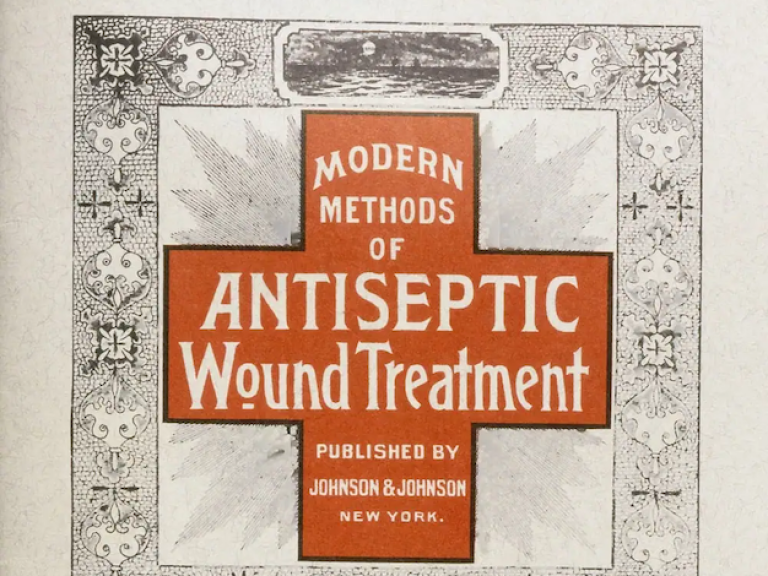
1888
The Johnson brothers soon discovered that manufacturing sterile supplies was not enough—they needed to teach doctors how to use them. In 1888, the company published Modern Methods of Antiseptic Wound Treatment, a how-to guide on antiseptic surgery.Explore modern methods
The Operating Table—The ordinary kitchen table will generally answer,” explained Modern Methods. “Bricks or wooden blocks should be placed under two legs of the table in order that the irrigating liquids may drain off toward the pail used for catching them.
1888
Itinerant salesmen traveled far and wide to distribute Modern Methods of Antiseptic Wound Treatment across the U.S. Within a matter of months, they’d given out 85,000 copies to doctors and pharmacists.Modern Methods of Antiseptic Wound Treatment was hailed as a major contribution to the field. It also served as a sales guide for Johnson & Johnson’s early surgical products, which were listed among the back pages.
Johnson & Johnson made inexpensive, quality products. In 1888, most of their surgical supplies cost a fraction of a physician’s weekly earnings, allowing for further adoption of sterile surgical practices.
The guide helped spread germ theory and antiseptic surgical methods. Just 13 years earlier, in 1875, surgeons had operated in street clothes and worked with unclean hands.
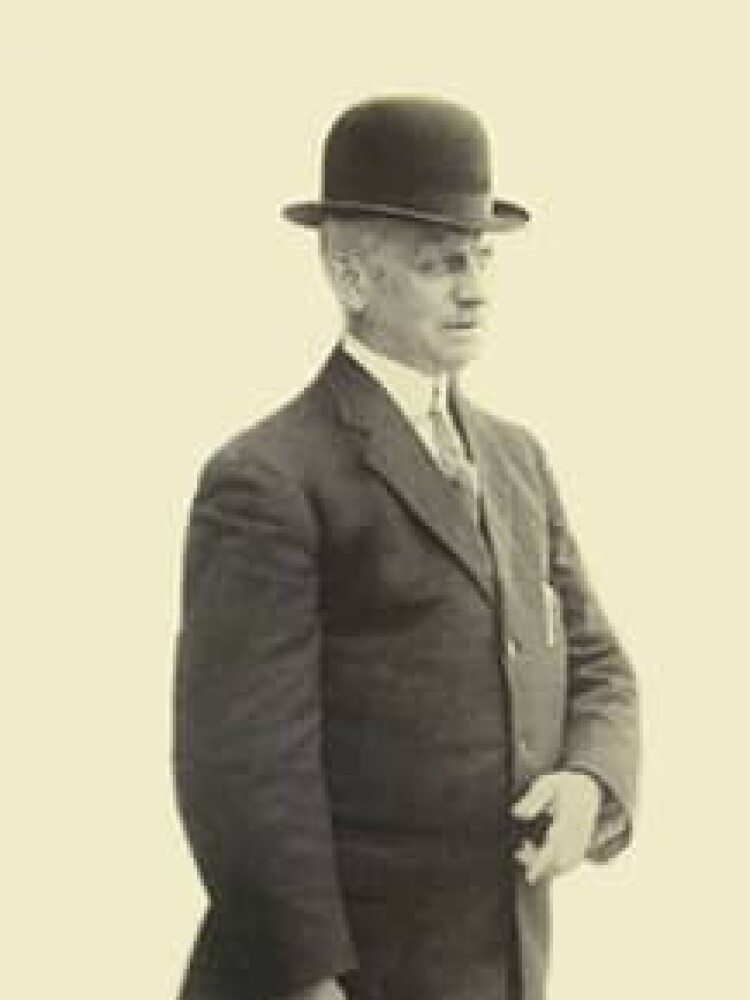
Dispensing Modern Methods: Company salesmen traveled by rail and horseback up the coasts and along remote frontier outposts to distribute Modern Methods.
Johnson & Johnson Archives

Johnson & Johnson’s horse-drawn fleet: These early drivers delivered company products to customers and to port. From 1902 to 1936, the company also had its own fleet of steamboats to take its products to port.
Johnson & Johnson Archives
1989
By 1889, many surgeons had adopted Lister’s methods. Here, a team of surgeons in 1889 accompanied by a nurse wears white uniforms and uses sterilized tools.Dr. Agnew, Sterile Surgeon
Dr. David Hayes Agnew was a pioneering American surgeon who championed Lister’s antiseptic methods. A veteran surgeon of the Civil War, Agnew was also a contributor to Johnson & Johnson’s Modern Methods of Antiseptic Wound Treatment. He devoted the later years of his illustrious career to teaching sterile practices in the operating theater.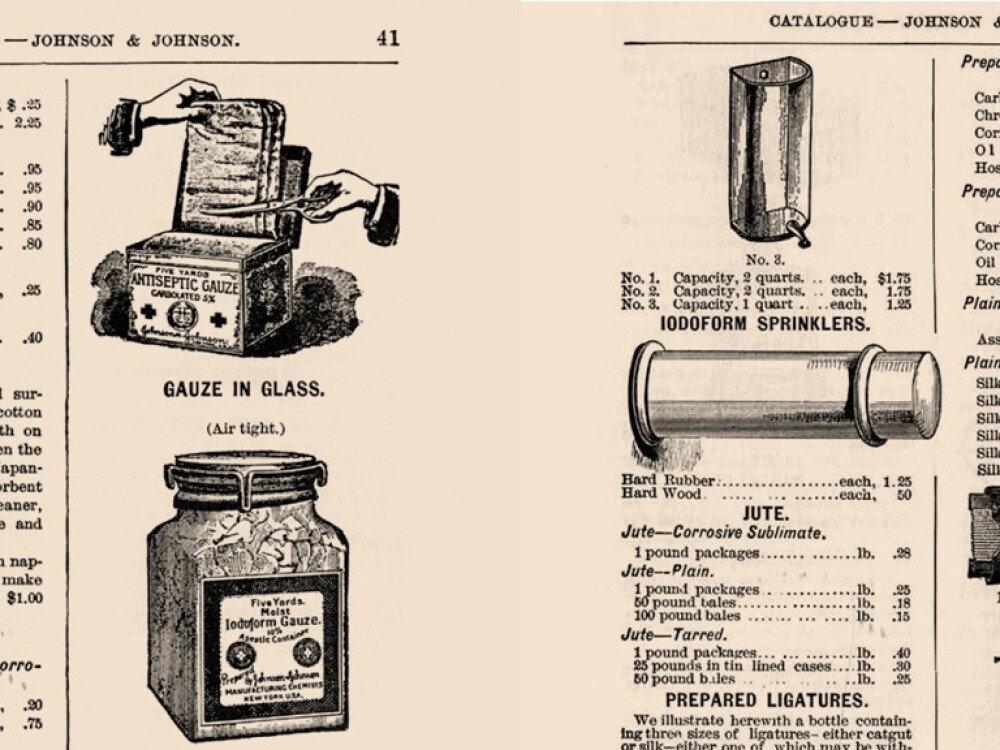
Modern Methods back pages with J&J products
Johnson & Johnson Archives

Portrait of Dr. Samuel D. Gross (The Gross Clinic), Thomas Eakins, 1875
Gift of the Alumni Association to Jefferson Medical College in 1878 and purchased by the Pennsylvania Academy of the Fine Arts and the Philadelphia Museum of Art, 2007.
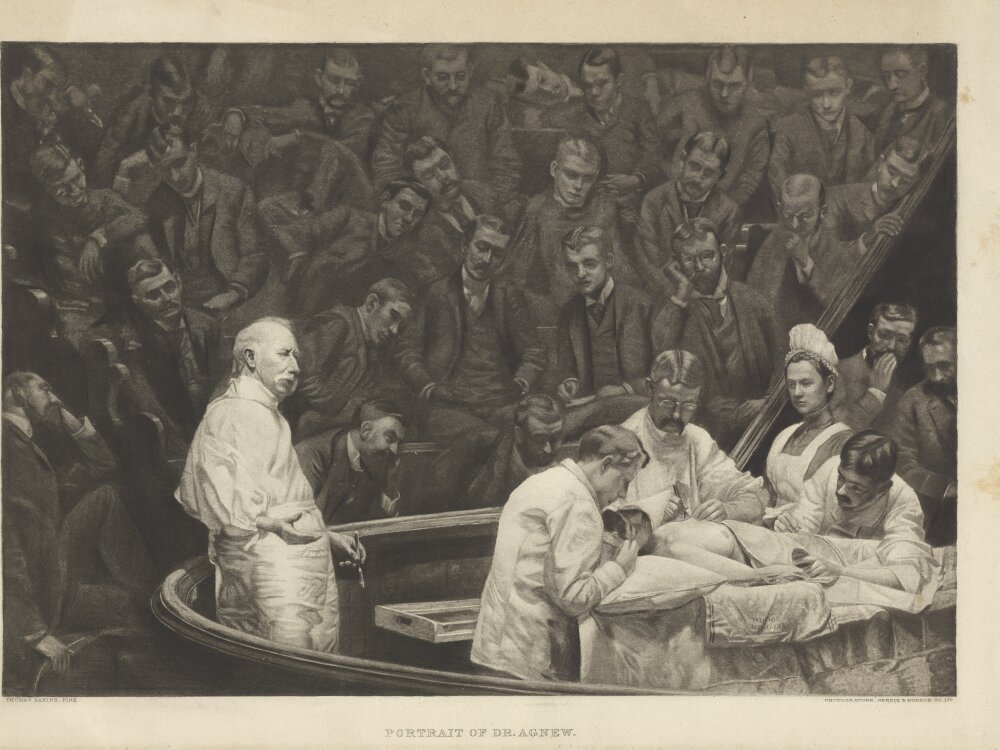
Etching, Gebbie & Husson, after Thomas Eakins painting of Dr. Hayes Agnew, circa 1889.
1892
Johnson & Johnson helped make sterile surgery a reality. Since its founding in 1886, the company had by the 1890s revolutionized the field of medicine, manufacturing the world’s first mass-produced antiseptic medical supplies.
Kilmer founded the company’s Aseptic Department in the early 1890s. The department was a series of “clean rooms” where sterile surgical dressings and sutures were mass-produced in sterile conditions and sterilized using the first industrial-size machinery for the task, also of Kilmer’s design.
Johnson & Johnson Archives

Photograph of the Johnson & Johnson Gauze Mill finishing department, circa 1890s to 1900, showing electric lighting.
Johnson & Johnson Archives












































